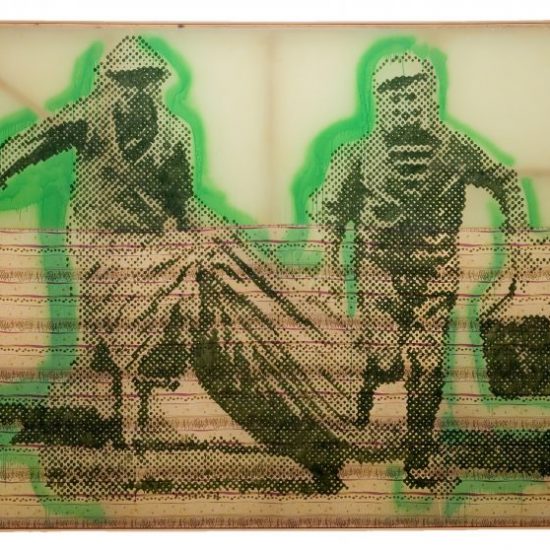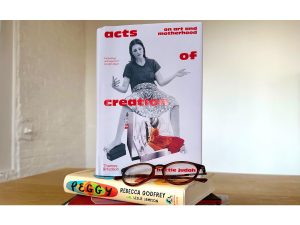This show was selected as part of Berlin Oomph powered by Hallen 05—a curated roundup of the best contemporary art exhibitions and events held by galleries, museums, and institutions in town during Hallen 05, September 2024.
The Schinkel Pavillon will show a large-scale exhibition by Sigmar Polke (1941–2010), with over forty works from important international collections. Polke is considered one of the outstanding artists of the 20th century in Germany and beyond. This exhibition aims to make Polke, a pioneer for generations of young artists, and whose works has not been publicly shown in a very long time, accessible to a wide audience once again. The exhibition brings together paintings, photographs, films and prints, dating from the 1960s to the 2000s and illustrates Polke’s artistic complexity, characterized by his astute observations, poignant placements of irony and witty joy in experimentation. The selected works focus on the political aspects of Polke’s work, demonstrating not only his precise analysis of his present, but also his unique skill as a critical commentator ahead of his time.
From an early age, Polke developed a keen interest in found images, their circulation, legibility and impact on the public imagination. In 1963, as response to the socialist GDR art of the time, the student Polke, together with fellow artists Manfred Kuttner, Konrad Lueg and Gerhard Richter, proclaimed the artistic movement Kapitalistischer Realismus [Capitalist Realism], later known as German Pop. The booming economy of West Germany and the accompanying post-war bourgeois idyll created novel, consumerist imagery, which Polke playfully and presciently incorporated into his art. While anchoring his pictorial sources in the reality of mass-media, he simultaneously “alchemically” steered the painting process in new directions, thus forging insights far beyond modernity into both history and the future.
Born in the Silesian town of Oels, now Oleśnica, and growing up in both East and West Germany, Polke was one of the artists of the 1960s who dealt with the collective trauma of the post-war generation. He confronted the political crisis of his time with a genuinely painterly, yet highly analytical approach to reality, with the effect that thirteen years after his death, these supposedly historical works are still highly topical, eerily reflecting today’s conflicts, crises and their representation in the media.
The exhibition includes works that appear lighthearted, disguised as jokes and only reveal their inherent discursive criticism at second glance. In Dr. Bonn, 1978, a civil servant sits in front of his desk with his face obliterated, about to commit suicide using a slingshot. On the wall in front of him hang the striking mugshots of two RAF (Red Army Faction) members. Sicherheitsverwahrung, 1979, captures the arrest of a woman in the style of a comic strip. Approaching the canvas one then recognises that it is adorned with fine gold chains, safety pins and trinkets.
The title of the exhibition “The Native Forest Floor” (German: “Der Heimische Waldboden”) should be understood both figuratively and literally, and ironically refers to the humus or breeding ground of the artist’s biography, which was so intertwined with that of both post-war Germanies. Polke’s connection to Berlin and its divided history is explored in the films on show. Besides important paintings such as Carl Andre in Delft, 1968, Die Schmiede (Smithy), 1975, Gangster, 1988, Flüchtende, 1992; or the later pigment painting Lapislazuli, 1992, a collection of photographs from the 1960s/70s—the majority of which are in fact unique—are shown here for the very first time. They in particular give a fascinating insight into the vibrancy of the youth movement of the time, and the fundamental unmooring of the German post-war status quo it set in motion. Yet they are simultaneously touching testimonies of a contemporary facing both turmoil and happiness with great sensitivity. Known for his witty mental agility and investigations of the materiality of art, Polke’s entire œuvre bears witness to an inimitable personal and artistic love of freedom, without ever denying his belief in the great communicative relevance of art.
at Schinkel Pavillon, Berlin
until February 2, 2025




